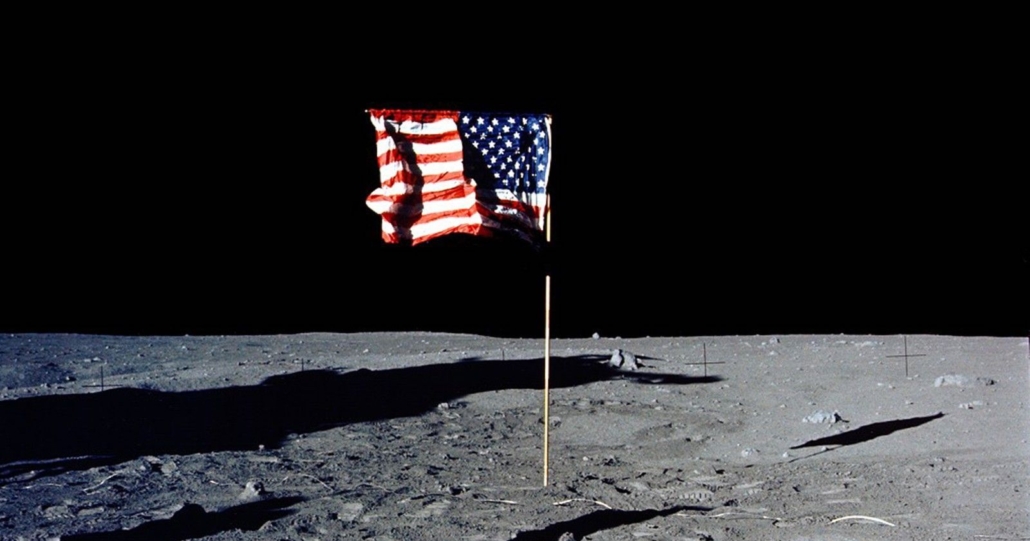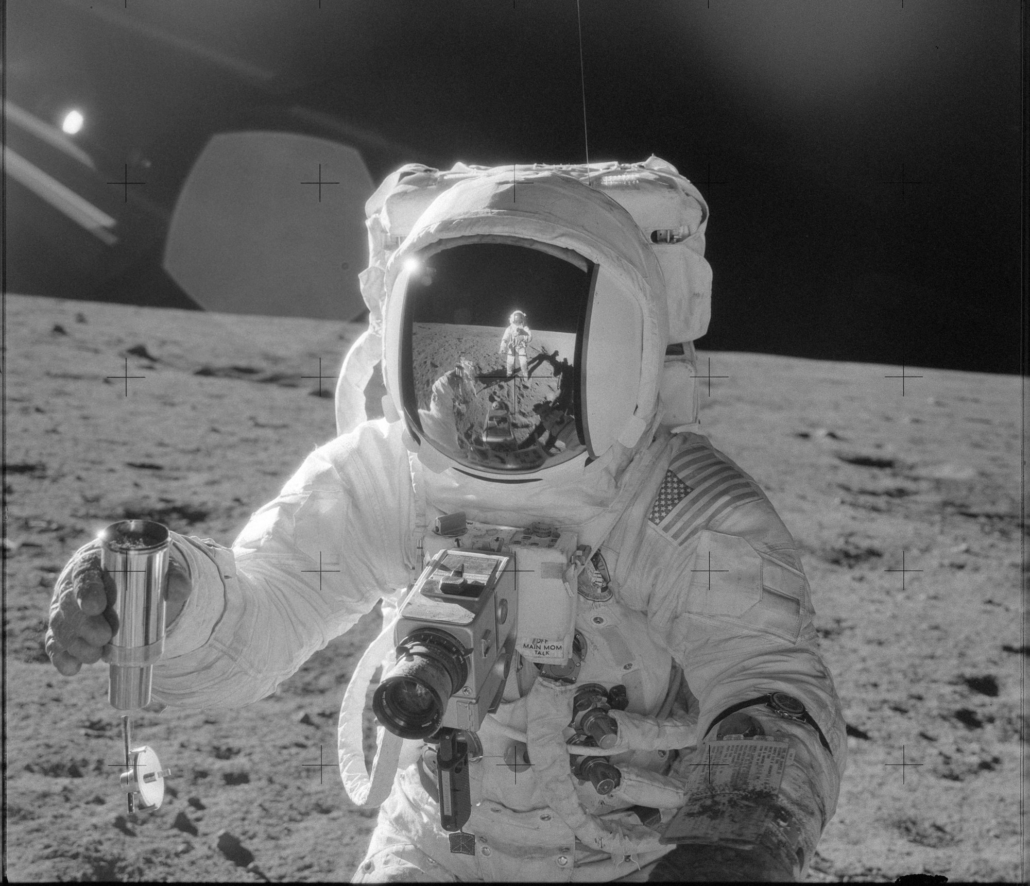Moon Conspiracy Theories Debunked

By: Moon Disaster Team
Starting with the historic 1969 voyage of Apollo 11, the United States sent six crews totaling 12 astronauts to the moon’s surface — and perhaps more impressively, brought them back alive. These unprecedented missions gave us breathtaking images of the earth rising over the moon, and Neil Armstrong’s unforgettable words as he became the first human to set foot on the lunar surface.
Yet the moon landings that captivated the world were barely complete when the conspiracy theories took root.
In 1976, four years after the final mission, a technical writer named Bill Kaysing who had worked for a NASA contractor self-published a pamphlet titled “We Never Went to the Moon: America’s Thirty Billion Dollar Swindle.” In it, he detailed a massive conspiracy in which the U.S. government was determined to pull one over on the public. Kaysing’s argument touched a nerve: the moon landing conspiracy has endured, despite the extraordinary amount of evidence to the contrary.
In 2001, Fox aired a controversial TV special billed as a documentary called “Conspiracy Theory: Did We Land on the Moon?” that has since racked up more than half a million YouTube views. Reddit forums and YouTube channels exist solely to discuss why the moon landing never happened. A British poll this year found one in five people in the UK thought that the moon landing was faked. The theory is so persistent that even NASA has entered the fray, citing the piles of evidence showing that the landing really happened and giving doubters the opportunity to view moon rocks.
What makes people so enamored with a theory that has almost nothing behind it? Americans have always loved a good conspiracy theory, as Roger Launius, former NASA chief historian, told The Guardian. The moon-hoax theory supports the idea that the American government is malicious and all-powerful enough to sustain a lie for decades — something that many conspiracists already suspect. Another factor may be that the Apollo missions are now far enough away in the rearview mirror that they have become easier to dispute. Finally, pop culture references to faked NASA landings (see: the James Bond film “Diamonds are Forever,” and the 1978 Peter Hyams film “Capricorn One”) certainly haven’t helped.
Whatever the reason, there are a number of recurring lines of “evidence” that point to a grand conspiracy in Kaysing’s theory and others since. Here are some of the most famous ones, debunked:
The Waving Flag
In archival photos, the U.S. flag planted on the moon by the Apollo 11 crew appears to flutter in the wind. But there is no wind on the moon, where the atmosphere is thin enough to be virtually nonexistent. Conspiracy theorists have repeatedly cited this fact as proof that the landing was staged. .
In reality, the flag was held aloft by a horizontal rod. Its rippled appearance was due to the fact it was folded during flight, and because the astronauts, worried the flagpole would fall, took photos immediately after they twisted it into the ground, capturing the flag while it was still moving.
Moon conspiracy theorists often point out that the American flag appears to be fluttering in the breeze, as it does in this 1969 photo from the Apollo 11 mission. (Credit: NASA)
No Stars
Conspiracists point to the lack of stars in Armstrong and Aldrin’s lunar photos, saying the government deliberately obscured them to hide the fact that the landing was actually filmed on Earth.
In fact, cameras would not have captured stars during the lunar day, when bright sunlight on the surface of the moon would have made them difficult or impossible to pick up.
Shadows don’t appear parallel. (Credit: NASA)
Shadows
Conspiracy theorists argue that the angles and colors of shadows shown in pictures are inconsistent, which they say suggests stage lighting on Earth rather than sunlight on the surface of the moon.
In reality, the assumption that sunlight on the moon would cast similar-looking shadows all in one direction is flawed. The surface of the moon reflects light, enough for light to scatter into the shadows. The astronauts also had cameras with wide angle lenses, which can distort objects.
Apollo program space suits had cameras mounted to the chest. (Credit: NASA)
The Selfie
Neil Armstrong can be seen reflected in the helmet of Buzz Aldrin’s visor, but you can’t see Armstrong holding the camera. Conspiracists say that there must have been someone else taking the picture.
Actually, the astronaut’s cameras were mounted on their chests.
Lede photo credit: NASA


